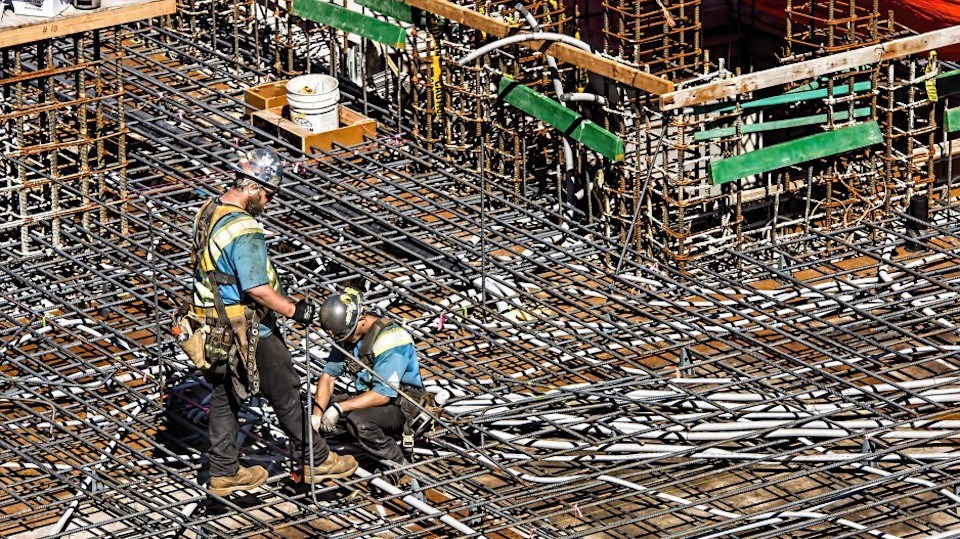The stark mismatch between housing supply and demand is top-of-mind in B.C., but the push to build more houses is complicated by the cost pressures faced by the construction industry.
The problems are compounding: The construction industry is being squeezed on the revenue side, with a soft market due to rising interest rates, and an increase in costs as a result of supply chain shortages and inflation. The result is the eroding of potential profitability which causes developers to see projects as less economically viable, said Brendon Ogmundson, chief economist for the British Columbia Real Estate Association.
Fifty per cent of builders and developers surveyed in 2022’s second quarter indicated that there has been less traffic from prospective buyers as a result of the interest rate increases, according to the Canadian Home Builders’ Association’s Housing Market Index. Another 45 per cent said that buyers were delaying home purchases, and 38 per cent said buyers have started changing their minds about purchases.
In order to see the long-run rate of price appreciation on homes go down, more housing supply is needed and it needs to get to market a lot faster, Ogmundson said.
“What tends to happen is we have these disconnects where we have low supply, we have a demand shock that hits the market and listings get depleted. That causes prices to accelerate really fast, and we can’t get the new supply to the market fast enough to offset those demand shocks,” he said.
But building more housing in B.C. is easier said than done.
According to Chris Gardner, president of the Independent Contractors and Businesses Association, the construction industry in B.C. is facing a “perfect storm” of three factors: Labour shortages, a fragile supply chain and issues with the permitting process.
Ogmundson said that B.C. has the highest vacancy rate for construction employment in Canada.
To further complicate the matter, BuildForce Canada is predicting that 25,000 construction workers will retire before 2027, representing 13 per cent of the labour force. To keep up with the pace of construction in the province, B.C. will need to recruit and train an estimated 27,600 workers before 2027.
Neil Moody, CEO of the Canadian Homebuilders’ Association of British Columbia, says that the shortage in skilled labour is causing project delays.
“If a builder can’t secure enough skilled trades to complete projects, it results in a domino effect of construction delays that will ultimately affect the homebuyer. Unfortunately, all of this adds to the overall cost as project deadlines must be extended.”
Cost and time increases are not only felt through the shortage of skilled labour but also as a result of ongoing issues with supply chains.
Moody said that while supply chain shortages have eased, there are still issues that projects have to cope with. For example, the glass shortage has improved, but there is a shortage of home appliances.
“No homeowner wants to move into a home that is missing appliances, and that has impacted the completion schedule for many projects,” he said.
In addition, the price of steel is up, which can add to the overall cost of a housing project. The root of this price increase is sanctions on Russia, which have affected supply all over the world, according to Moody.
“Currently, we’ve seen ‘sticky pricing’ on some raw materials. While they aren’t dropping back to previous levels, they aren’t shooting upward either,” he said.
Will Pauga, president of Southwest Contracting Ltd. and vice-chair of the Vancouver Regional Construction Association, says that the price of rebar and fuel have been on the rise, too.
“There’s so much work, and I think there’s more in Vancouver than anywhere else because we have so many major infrastructure projects all going at the same time right alongside private development.”
Pauga added that this can slow down private development as companies compete for labour and materials.
Delays in obtaining development permits and approvals for projects can further stretch out building timelines.
Permitting, licensing and red tape is the top election issue for Greater Vancouver businesses, according to the Greater Vancouver Board of Trade’s Metro Elects survey, conducted by the Mustel Group. Creating a more streamlined process for development approvals and permitting has been a point of discussion among Vancouver’s leading mayoral candidates.
At a Glacier Media Inc. (TSX:GVC) debate Sept. 26, Mayor Kennedy Stewart promised to decrease the amount of time needed for a rezoning application. Mayoral candidate Ken Sim argued building permits for approved forms of development should be automatic.
On the World Bank’s 2020 Ease of Doing Business Index, Canada was ranked No. 64 out of 190 economies for dealing with construction permits.
Moody echoed this, saying that the time it takes to process developments and building permits adds more time and complexity to an already difficult working environment.
Getting more housing supply is desperately needed as it feeds into what seems like a negative feedback loop. In order to secure more skilled labour, more housing is needed for those workers to live. But creating that housing involves the pressures explored above.
“Anytime that we’re talking about these types of uncertainties, whether it be labour shortages, whether it be supply chain pressures and the cost of materials, that is going to all have a detrimental impact on the industry’s ability to build,” said Chris Atchison, president of the British Columbia Construction Association.
Atchison said that working together with other groups and associations in construction is key now to alleviate some of the pressures that are being experienced.
He said more work needs to be done with governments and stakeholders in order to ensure they understand the impacts of escalating costs or supply chain disruptions.
“I think that we’re paying attention to all these things, and there’s also good things that are going on in the construction sector, a lot to be thankful for. But we’ve still got to pay attention to those risk factors on the horizon.”



